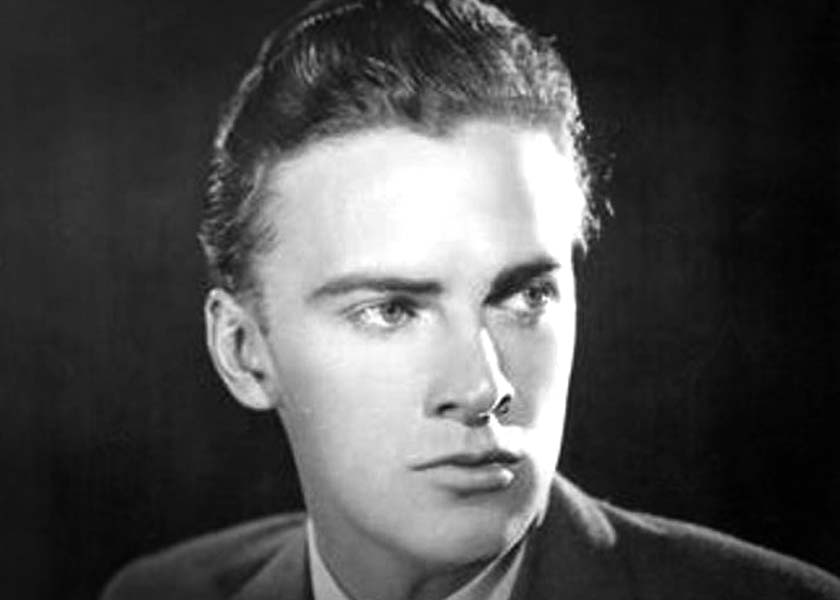Raymond Hackett, a legit
actor (a term used by Variety to describe a
professional actor appearing predominantly on the stage) from childhood, appeared
on Broadway in his youth, but most of his career was spent in the playhouses of
cities across the country. He made a few silent films, and at the advent of
talking pictures, temporarily left the stage for film. From 1929 to 1931, Hackett
frequently played supporting roles, often as the son or brother of the film’s
star. From 1932 until his death, he appeared exclusively on stage.
Early Theatrical Career
At age 5, Master
Raymond Hackett (as he was billed during his child years)
began his Broadway career in The Toymaker of Cremona (1907),
following his mother, Florence, and older brother, Albert, onto the stage. At age
10, he appeared with Maude Adams in Peter Pan (1912). At 16, he
played Lionel Barrymore’s son in Copperhead (1918). During the 1920s,
Hackett appeared in seven Broadway productions. In the most successful,
Cradle Snatchers, which had 478 performances from 1925-26, he
co-starred with several actors who later gained fame in the movies: Humphrey
Bogart, Mary Boland, and Edna May Oliver.
Film Career
Hackett made his film debut at age 10 for the Lubin Manufacturing Company, where his mother was a principal player. Many of the dozen short films he made for Lubin from 1912 to 1915 included his mother and brother in the casts. Mostly on the stage during the 1910s and 1920s, Hackett made six silent features from 1915 to 1928, including The Country Flapper (1922), with Dorothy Gish, and The Love of Sunya (1927), with Gloria Swanson.
Hackett appeared in a dozen early talkies between 1929 and 1931, seven of them produced by MGM. In this interesting group of films he played prominent roles, often as the son or younger brother of the main character. Hackett’s first talking pictures, The Trial of Mary Dugan (1929), with Norma Shearer, and Madame X (1929), with Ruth Chatterton, co-starred him with women leads whose characters and performances commanded audience and critical attention. Hackett received minimal notice. The unsuccessful Footlight and Fools (1929) featured Hackett and Fredric March as competitors for Colleen Moore’s favors. In 1930, Hackett played the brothers of Marion Davies in Not So Dumb and Robert Montgomery in Our Blushing Brides, as well as the romantic lead in The Cat Creeps (1930), a lost version of the 1922 melodrama The Cat and the Canary. In his final film, Seed (1931), Hackett played John Boles’ son.
Later Theatrical Career
Raymond Hackett returned to the stage in 1932. On Broadway, he played Armand Duval to Lillian Gish’s Marguerite Gautier in Camille (1932, 15 performances), followed by Conquest (1933, 10 performances) with Judith Anderson and Henry O’Neill, and Nine Pine Street (1933, 28 performances) with Lillian Gish. His final appearance on Broadway was in Piper Paid (1934, 15 performances). The remainder of Hackett’s career was spent in repertory or individual engagements around the country, including Chicago, Philadelphia, Providence, and Los Angeles. He often appeared with his second wife, Blanche Sweet.
Personal Life
Raymond Hackett was born July 15, 1902 in New York, NY, to Florence and Maurice Hackett. Florence, who appeared in vaudeville and film (with the Lubin Manufacturing Company, 1911-1915), started her sons on theatrical careers at an early age. Hackett's older brother Albert (1900-1995), initially an actor, became a successful playwright and film scenarist.
In 1927, Hackett married actress Myra Hampton (1903-1945) who had appeared with him in Cradle Snatchers. Their child, Peter, was born in 1930. The couple divorced in 1935; later that year, Hackett married Blanche Sweet (1896-1986), notable silent film actress, six years his senior. Married more than twenty years, they appeared together frequently. On July 7, 1958, Raymond Hackett, age 55, died in Los Angeles.
Career Consideration
Hackett had youth, good looks, a pleasant personality, and considerable acting
experience. These qualities made him a prominent supporting actor on stage and in
film, but not a star. During two years in talkies, his parts were typically as
secondary characters. After a dozen films, his final appearance found him in a
role similar to that of his first. Perhaps he could have risen to leads if he had
continued in movies, but it seems unlikely. After leaving film, he returned to the
stage as a featured actor, appearing for a short time on Broadway and afterwards
in theaters across the country where his career as a legit
actor continued
for many years.
Further Reading

